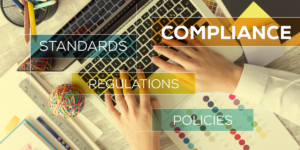In the world of special education, the development and implementation of Individualized Education Programs (IEPs) is at the heart of supporting students with disabilities. However, ensuring the success of these programs is not a one-person task. It requires the active collaboration of a diverse team of educators, service providers, administrators, and, crucially, the families of students. A strong, cohesive IEP team not only ensures that the student’s academic and behavioral needs are met but also fosters an environment where each team member’s expertise contributes to developing a comprehensive, effective support plan. So, what exactly makes a successful IEP team, and why is collaboration so essential?
💡 You can also download this resource as a PDF here.
Silos and Communication Gaps
In many school districts, special education teams often work in silos. Teachers, administrators, and service providers may not always coordinate their efforts effectively, leading to communication breakdowns and a lack of consistency in the student’s educational experience. For example, a special education teacher might have one perspective on the student’s behavior, while a counselor might be unaware of certain academic goals set for that student. When team members aren’t aligned in their goals and approaches, it becomes difficult to meet the student’s needs comprehensively.
Additionally, administrative challenges, such as limited time for team collaboration or unclear roles, can further complicate the process. With the complexities of the IEP process and the need for constant updates, these gaps can result in inefficiencies, missed opportunities for progress, and, ultimately, suboptimal outcomes for students.
The Solution: A Collaborative, Team-Based Approach
The solution to these challenges is straightforward: collaboration. By fostering a culture of teamwork and mutual respect, schools can ensure that IEP teams work together effectively, leveraging each team member’s unique knowledge and skills to create the best possible outcomes for students.

Here are several key strategies for building strong, collaborative IEP teams:
1. Clear Roles and Responsibilities One of the first steps in creating a functional IEP team is to ensure that each member has a clear understanding of their role. It’s not just about having the right people in the room; it’s about understanding the specific expertise they bring. Teachers, service providers, counselors, and administrators should have clearly defined responsibilities that complement one another, with no overlap or gaps. This clarity allows everyone to contribute meaningfully to the process.
2. Regular, Structured Communication Consistent and structured communication is critical. Scheduling regular team meetings to review student progress, discuss challenges, and adjust goals is a necessity. This ensures that every member of the team is on the same page and allows for ongoing collaboration. Tools like shared documents, collaborative platforms (such as Google Docs or school-specific databases), and weekly check-ins can help maintain alignment.
3. Shared Goal Setting IEP goals should reflect input from all team members, not just the special education teacher. For example, an occupational therapist might offer insights into functional skills that should be addressed, while a speech-language pathologist may have recommendations for communication goals. Collaboration on goal setting ensures that every aspect of the student’s development is considered, and that everyone is working toward the same objectives.
4. Involving Families in the Process The family plays a pivotal role in the IEP process. Including parents and caregivers as integral members of the team not only gives them a voice in their child’s education but also provides the team with critical insights into the student’s needs and strengths. Building strong relationships with families fosters trust and encourages more meaningful contributions, which ultimately benefits the student’s learning journey.
5. Flexibility and Problem-Solving IEP teams should approach each meeting with a mindset of flexibility and problem-solving. Students’ needs can change over time, and it’s essential that the team is willing to reassess and adapt the IEP accordingly. If a student is not making progress on a particular goal, the team must be open to reevaluating strategies, interventions, and supports to ensure that the plan remains relevant and effective.
6. Ongoing Professional Development Providing professional development opportunities for the IEP team is key to maintaining an effective, well-coordinated team. This training could include workshops on legal requirements, behavior management techniques, or new technologies and resources. Continuous learning ensures that team members remain informed and up to date on best practices in special education.
How Collaboration Drives Student Success
The reason a collaborative approach to IEP development and implementation is so effective is rooted in the fact that it recognizes the complexity of the students’ needs and leverages the strengths of various professionals. For example, special education teachers are experts in academic modifications and accommodations, while counselors and psychologists can address the student’s emotional or behavioral challenges. Speech-language pathologists may address communication issues, and physical or occupational therapists may focus on motor skills.
By drawing on each team member’s specialized knowledge, IEP teams can create a plan that is holistic and tailored to the student’s individual needs. This not only improves the quality of the student’s education but also enhances their chances for success, both academically and socially.
Collaboration also builds a more supportive environment for the student. When team members work together, they present a unified front to the student and their family, making it easier to implement and track the IEP’s progress. Moreover, when IEP teams have strong communication and shared goals, they can adapt more easily to changes, ensuring that students’ needs continue to be met throughout their educational journey.

Building a Culture of Collaboration
Ultimately, the success of special education programs lies in the culture of collaboration within schools and districts. Encouraging communication, setting clear expectations, and investing in ongoing professional development helps create a working environment where IEP teams are not only effective but also motivated to improve student outcomes.
By continuously striving to break down silos and promote teamwork, educators and administrators can ensure that every student’s unique needs are addressed in a way that fosters both academic success and personal growth. As we continue to navigate the complexities of special education, it is this collaborative spirit that will help drive meaningful change and improvement for all students.
Next Steps for Effective Collaboration
To create and sustain effective IEP teams, school leaders should prioritize fostering an environment where teamwork is the norm. This includes dedicating time for team meetings, ensuring that all team members are adequately trained, and promoting ongoing communication and feedback. By setting these practices in place, schools can ensure that their IEP teams are working as efficiently as possible to meet the diverse needs of their students.
A collaborative, team-based approach to special education is not only a best practice – it’s the foundation of better student outcomes and long-term success.
About the Author: Jaclyn Miranda is a Client Solutions Specialist at Go Solutions, where she focuses on consulting with clients to develop personalized strategies that address their unique challenges. Drawing on her background in education and behavioral health, she excels at offering insightful, tailored guidance to help clients optimize their operations and achieve their goals. Jaclyn’s consultative approach is centered on building long-term relationships, ensuring that each solution is aligned with her clients’ needs and contributes to their ongoing success.





